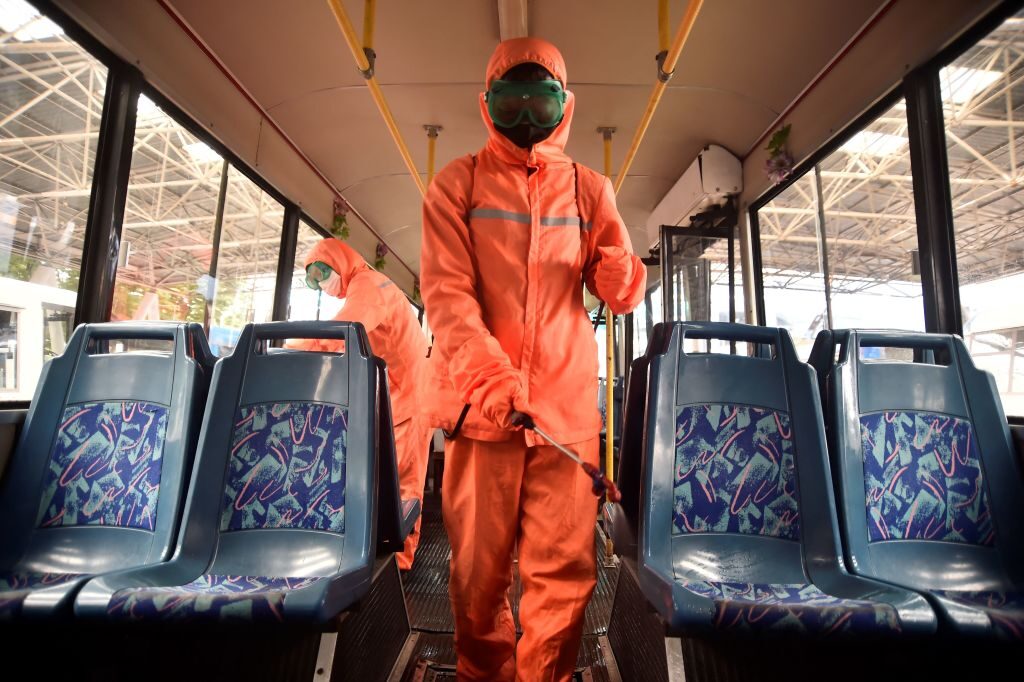The communist regime ruling North Korea declared victory against the Chinese coronavirus pandemic this week after only three months of having admitted to any coronavirus cases within its borders, publishing commemorative posters in its classic communist propaganda style.
The North Korean dictatorship first admitted to having confirmed cases of Chinese coronavirus within its borders in May, two years after the disease had spread to nearly every country on the planet. It was one of the last countries to officially document coronavirus cases despite sharing borders with the country where the virus originated, China, as well as Russia and South Korea, which have both endured severe outbreaks of the disease.
The official newspaper of the communist Workers’ Party of Korea (WPK), Rodong Sinmun, and the government’s Korean Central News Agency (KCNA) announced the creation and distribution of posters on Wednesday to officially mark the end of the epidemic in the country. The posters featured illustrations of doctors and other health workers as well as seemingly unrelated peasants, construction workers, and soldiers. The soldiers appear to be a nod to the fact that Kim deployed the military for disinfection campaigns and to enforce lockdowns.
The South Korean news agency Yonhap published other posters showing health workers in personal protective equipment and apparent happy families.
“The Workers’ Party of Korea (WPK) Publishing House and Pyongyang University of Fine Arts have produced new posters that inspire all the people to the struggle for making greater miracle [sic] and success in every field of socialist construction,” Rodong Sinmun announced on Wednesday, “with the high spirit whereby they won the victory in the anti-epidemic work under the leadership of the WPK.”

Health officials of the Ryonmot Trolley Bus Office disinfect a trolley bus, as part of preventative measures against the Covid-19 coronavirus in Pyongyang on June 9, 2022. (KIM WON JIN/AFP via Getty Images)
The newspaper described two posters titled “Great Victory in the Anti-epidemic Campaign!” and “Let Us Dynamically Speed up the Construction of the State Anti-epidemic Capability!”
“There are also posters calling on all the members of society to overcome any slight conceit, carelessness and slackness in the anti-epidemic work,” the state propaganda arm continued, “and further cement the state’s anti-epidemic fortress and reflecting the stamina of all the people to put spurs to the struggle for the implementation of the militant tasks set forth at the 8th WPK Congress and plenary meetings of the Party Central Committee.”
North Korea’s state media announced on Monday that military medics deployed to “emergency anti-epidemic” work had completed their missions and departed from Pyongyang, where most were stationed.
“The medics left for their posts, taking an ardent pledge to be loyal to their duties as defenders of the country, creators of the people’s happiness and faithful servants of the people in the future, too,” KCNA claimed.
As a result of over 70 years of uninterrupted communist rule, North Korea is one of the world’s most impoverished nations, barely counting on any healthcare system at all. Dictator Kim Jong-un announced the construction of the “Pyongyang General Hospital,” alleged to be a state-of-the-art health facility, in March 2020, as China was facing its first and, experts believe, deadliest wave of Chinese coronavirus infection. At the time, the Kim regime refused to acknowledge a single case of Chinese coronavirus in the country despite sharing a mostly open border with China along its western Yalu River. The North Korean government vaguely alluded to the disastrous state of North Korean health care in his announcement of the Pyongyang General Hospital that year, describing Kim as “miserably self-critical” after analyzing the state of the nation’s health services.

A poster displayed outside Pyongyang Department Store No.1 showing people wearing face makes and reading “Displaying beautiful communist virtues and traits” is pictured in Pyongyang on May 27, 2022. ( KIM WON JIN/AFP via Getty Images)
In January 2021, nearly a year later, a report in the U.S.-backed independent outlet Radio Free Asia (RFA) revealed that the Kim regime had halted construction of the Pyongyang General Hospital because it ran out of construction materials. The project has yet to be completed at press time.
The Kim regime admitted to its first confirmed case of Chinese coronavirus in May. Kim Jong-un, state media reported, held an emergency meeting of his top officials to scold them for alleged “carelessness, relaxation, irresponsibility and inefficiency.” His regime declared the initial discovery of coronavirus cases an “explosive” outbreak and began publishing prodigious numbers of cases rapidly, at one point documenting as many as 18,000 cases a week. In less than a month, between “late April” and mid-May, North Korea claimed to have identified upwards of 1.2 million coronavirus cases. North Korea’s population is estimated to be about 26 million.
As rapidly as the regime announced an “explosive” outbreak, by early August, state media arms were reporting zero new cases identified on a daily basis.
The North Korean government claimed that the virus entered the country not through the porous Chinese border, but on contaminated, unspecified “alien objects” coming in from South Korea. While the Korean border, dubbed the Demilitarized Zone (DMZ), is heavily fortified, South Korean human rights activists often use balloons or water bottles to send aid packages with rice and other dry supplies, as well as fliers condemning the Kim regime for its human rights atrocities. While most health experts agree that Chinese coronavirus contamination through touching inanimate objects is not a primary mode of transmission, Kim regime officials repeatedly insisted that objects from South Korea had caused the outbreak and have repeatedly threatened unspecified consequences for Seoul.
KCNA also published a report claiming that the Chinese coronavirus was created and spread in an American laboratory in Ukraine, a conspiracy theory propagated by the Russian government. In reality, no known cases of Chinese coronavirus have been documented anywhere in the world outside of the first cases identified in Wuhan, central China, in late 2019. North Korea nonetheless referred to the United States as “a vicious sponsor of biological terrorism throwing mankind into destruction.”
Locals with knowledge of activities in Pyongyang told RFA in May that the first people in the country to show signs of coronavirus infection were border patrol guards stationed along the Yalu River, the border with China. Some speculated that these soldiers then traveled to the capital for a massive parade to honor the anniversary of the establishing of the nation’s military, spreading the disease among their peers.
Follow Frances Martel on Facebook and Twitter.

COMMENTS
Please let us know if you're having issues with commenting.